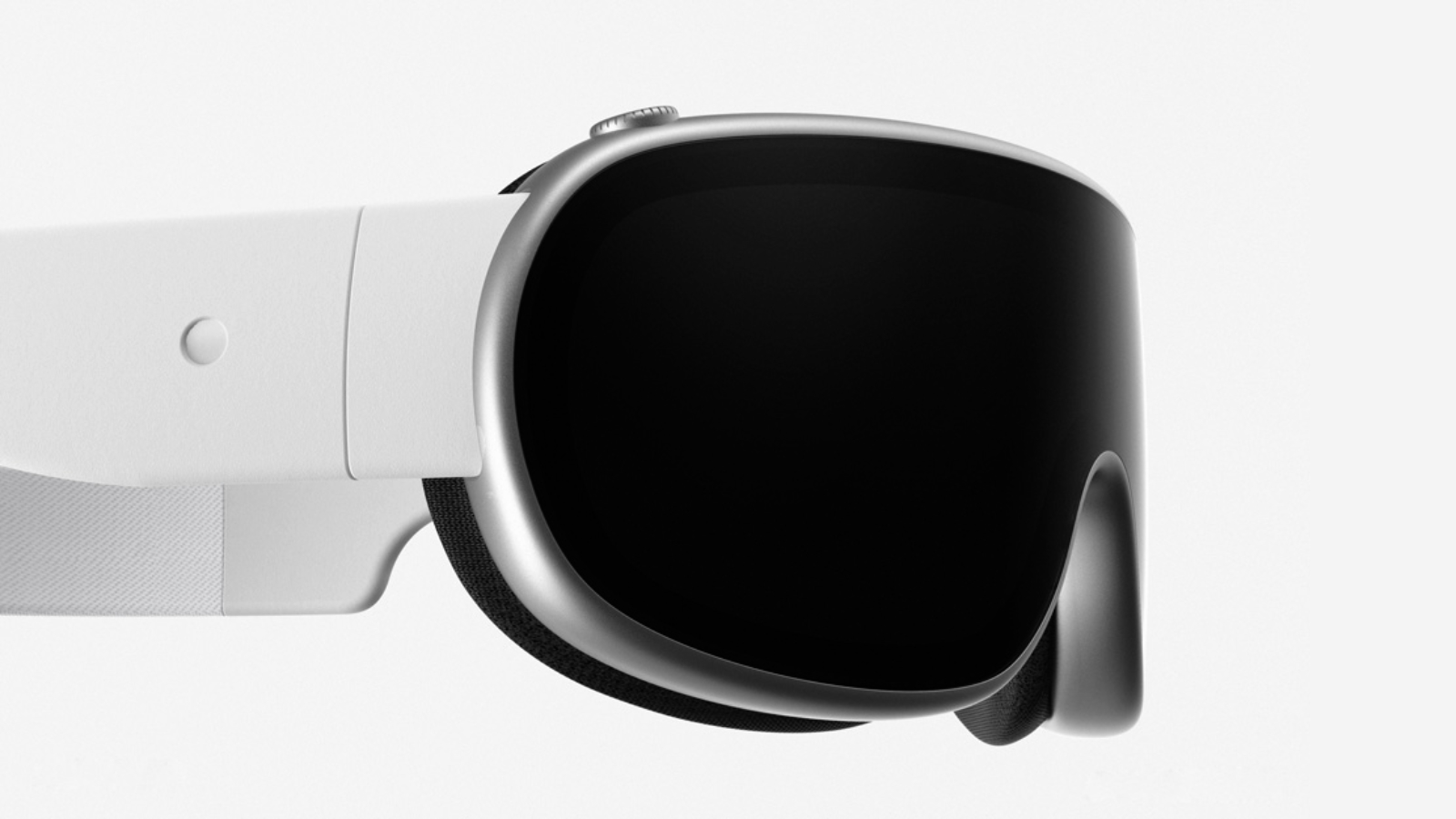05.31.2023
Apple's mixed-reality headset will reportedly be the most complicated hardware product ever made by the company, sporting an unusual design that has proven to be an unprecedented challenging to manufacture,
 Apple headset concept by Marcus Kane
Apple headset concept by Marcus KaneThe headset apparently features an "unconventional curved design, thinness, and ultralight weight." Several renders seen by The Information "show a piece of curved glass with edges wrapped in a smooth aluminum frame that appears to be slightly thicker than an iPhone." The thin profile requires users who wear glasses to buy prescription lenses that magnetically clip into the headset.
Apple had to develop a first-of-its-kind "bent motherboard" to fit inside the headset's curved outer shell. Carbon fiber is used inside the headset to reinforce the structure without adding additional weight.
A small dial is located above the right eye, allowing users to transition between augmented and virtual reality, and a power button is located above the left eye. A round connector that looks similar to an Apple Watch charger attaches to the headset's left temple and runs down via a cable to a waist-mounted battery pack.
The headset's headband is primarily made of a soft material and attached to two short, hard temples which also contain the left and right speakers. A soft, removable cover attaches to the back of the headset for comfort against the wearer's face. Apple is said to have debated adding additional eye-tracking cameras or further adjustments to the motorized lenses to accommodate more face shapes.
Apple's industrial design team apparently pushed for the front of the headset to be made of a thin piece of curved glass, requiring more than a dozen cameras and sensors to be concealed for aesthetic reasons. There have apparently been concerns about the glass warping the images captured by the cameras, which could cause nausea if left unfixed, and the material is more prone to shattering than an iPhone screen due to its shape, leading to worries about broken glass from the headset injuring users.
The design is said to be the main driver behind the device's ~$3,000 retail price. Assembly workers apparently struggle to maneuver tools and install components at awkward angles inside the device due to its shape and densely packed electronics. Testing of the glass housing and cameras also takes far longer than equivalent processes for other Apple devices.
The headset's microOLED displays are also said to be so expensive that Apple has to fix defective units rather than discard them. Sony, the displays' supplier, could struggle to manufacture enough panels for more than 250,000 headsets this year due to their small size and pixel density.
Apple has struggled to build prototype headsets due to its complicated design. At an earlier stage in development, Apple was making 100 headsets a day, but only 20 units were up to the company's standards. In mid-April, the headset underwent design validation testing, where it reportedly remained for an unusually long period compared to more mature products like the iPhone. Apple apparently made unusually late design tweaks as late as April, to make it easier to manufacture.
While mass production of the headset has not yet begun, Luxshare, its sole manufacturer, has purportedly told workers that the factory that will make the headset must be fully staffed by July. The Information believes this points to a launch in the fall or winter. Apple is expected to ship less than half a million headsets during the first year of its release. For more details, see The Information's full report.
Related Roundup: AR/VR Headset
Tags: The Information, Luxshare
Related Forum: Apple Glasses, AR and VR
This article, "Apple's Unusual Headset Design Has Led to Unprecedented Production Challenges" first appeared on MacRumors.com
Discuss this article in our forums
You may also be interested in this
Threads feed of people yo…
07.06.2023
Twitter’s implosion has helped Threads get off to a great start, gaining 10M users in the first 10 hours. But the app’s rush to market has meant some surprising failings,
iOS 17: What’s New …
07.10.2023
With iOS 16, Apple introduced a whole new look for the Lock Screen complete with widgets and customizability, and in iOS 17, the Lock Screen is getting further refinements. Widgets
The Best Black Friday Air…
11.28.2025
Black Friday is the best time of the year to shop for AirPods, and in 2025 we're tracking massive discounts across nearly every model, including AirPods 4, AirPods Pro 3,
How could Apple respond t…
06.06.2024
In the dynamic landscape of technology, where innovation is the heartbeat of progress, companies like Apple must remain vigilant and adaptable to the ever-evolving environment. Over the next 10 years,
Everything New in iOS 26.…
09.22.2025
Apple released the first beta of iOS 26.1 today, just a week after launching iOS 26. iOS 26.1 mainly adds new languages to Apple Intelligence, but there are a few
Returns of Humane AI Pin …
08.08.2024
Late last year, former Apple designer Imran Chaudhri and former Apple software manager Bethany Bongiorno launched one of the first AI wearables under their Humane brand. The $699 Humane AI
Apple bans its employees …
05.19.2023
Earlier today, OpenAI released the official ChatGPT app for iPhone. The tool has become well known for answering users’ requests and solving from the simplest to the most complex issues
Get the PutterBall backya…
06.06.2023
Rather than settle for a standard, stale present this Father's Day, think outside the box with the PutterBall backyard golf game. (via Cult of Mac - Tech and culture through


